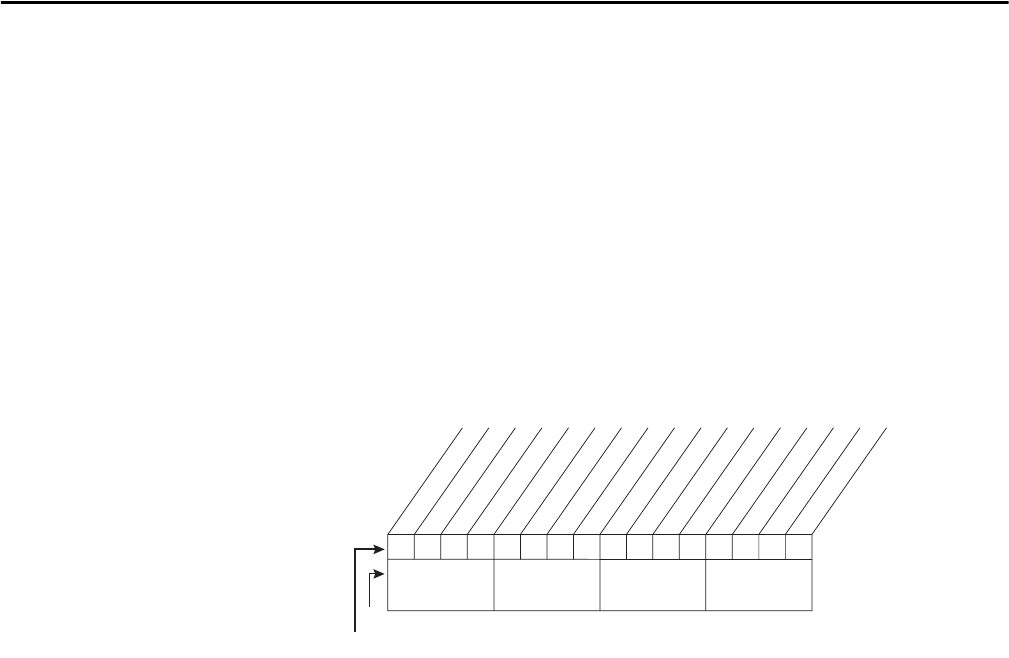Owner's manual
Table Of Contents
- Front Cover
- Important User Information
- Summary of Changes
- Table of Contents
- Introduction
- About the Drive
- Identifying the Drive by Cabinet Assembly ID Number
- LiquiFlo 2.0 Drive Component Locations
- Identifying the Power Module by Model Number
- AC Line I/O Board Description (Frame 3 Only)
- Standard I/O Board Description (Frame 3 Only)
- Combined I/O Board Description (Frame 4 Only)
- DPI Communication Ports
- Optional Equipment
- Planning the Installation
- Mounting The Power Module and Grounding the Drive
- Installing Input and Output Power Wiring
- Completing the Installation
- Using the Start-up Routines
- Programming Basics
- Parameter Descriptions
- Troubleshooting the Drive
- Verify that the DC Bus Capacitors are Discharged Before Servicing the Drive
- Determining Drive Status Using the Status LEDs
- About Alarms
- About Faults
- Diagnostic Parameters
- Common Symptoms and Corrective Actions
- Replacement Parts
- Board Replacement, Firmware Setup Procedures
- Troubleshooting the Drive Using the OIM
- Checking the Power Modules with Input Power Off
- Technical Specifications
- Using the OIM
- Installing and Removing the OIM
- Display Description
- OIM Menu Structure
- Powering Up and Adjusting the OIM
- Selecting a Device in the System
- Using the OIM to Program the Drive
- Monitoring the Drive Using the Process Display Screen on the OIM
- Displaying and Changing the OIM Reference
- Customizing the Process Display Screen
- Customizing the Function Keys
- Controlling the Drive From the OIM
- LiquiFlo 2.0 Drive Frame 3 Wiring Diagrams
- LiquiFlo 2.0 Drive Frame 4 Wiring Diagrams
- Index
- Back Cover

98 Rockwell Automation Publication D2-3518-3 - May 2013
Chapter 9
The purpose of the PI regulator is to regulate a process variable such as position,
pressure, temperature, or flow rate, by controlling speed.
There are two ways the PI regulator can be configured to operate (see parameter
124):
• Process trim, which takes the output of the PI regulator and sums it with a
master speed reference to control the process.
• Process control, which takes the output of the PI regulator as the speed
command. No master speed reference exists, and the PI output directly
controls the drive output.
Note that Speed Mode (80) must be set to Process PI (2).
Figure 41 - PI Control (125)
Bit 0 - PI Enable
• Enables/disables the operation of the PI loop.
Bit 1 - PI Hold
• Enabled = The integrator for the outer control loop is held at the
current level; that is, it will not increase.
• Enabled = The integrator for the outer PI control loop is allowed to
increase.
Bit 2 - PI Reset
• Enabled = The integrator for the outer PI control loop is reset to zero.
• Disabled = The integrator for the outer PI control loop integrates
normally.
00x 0xxxxxxxxxxxx
0011234567891112131415
1=Enabled
0=Disabled
x =Reserved
Bit #
Factory Default Bit Values
PI Enable
PI Hold
PI Reset
Nibble 1Nibble 2Nibble 3Nibble 4










